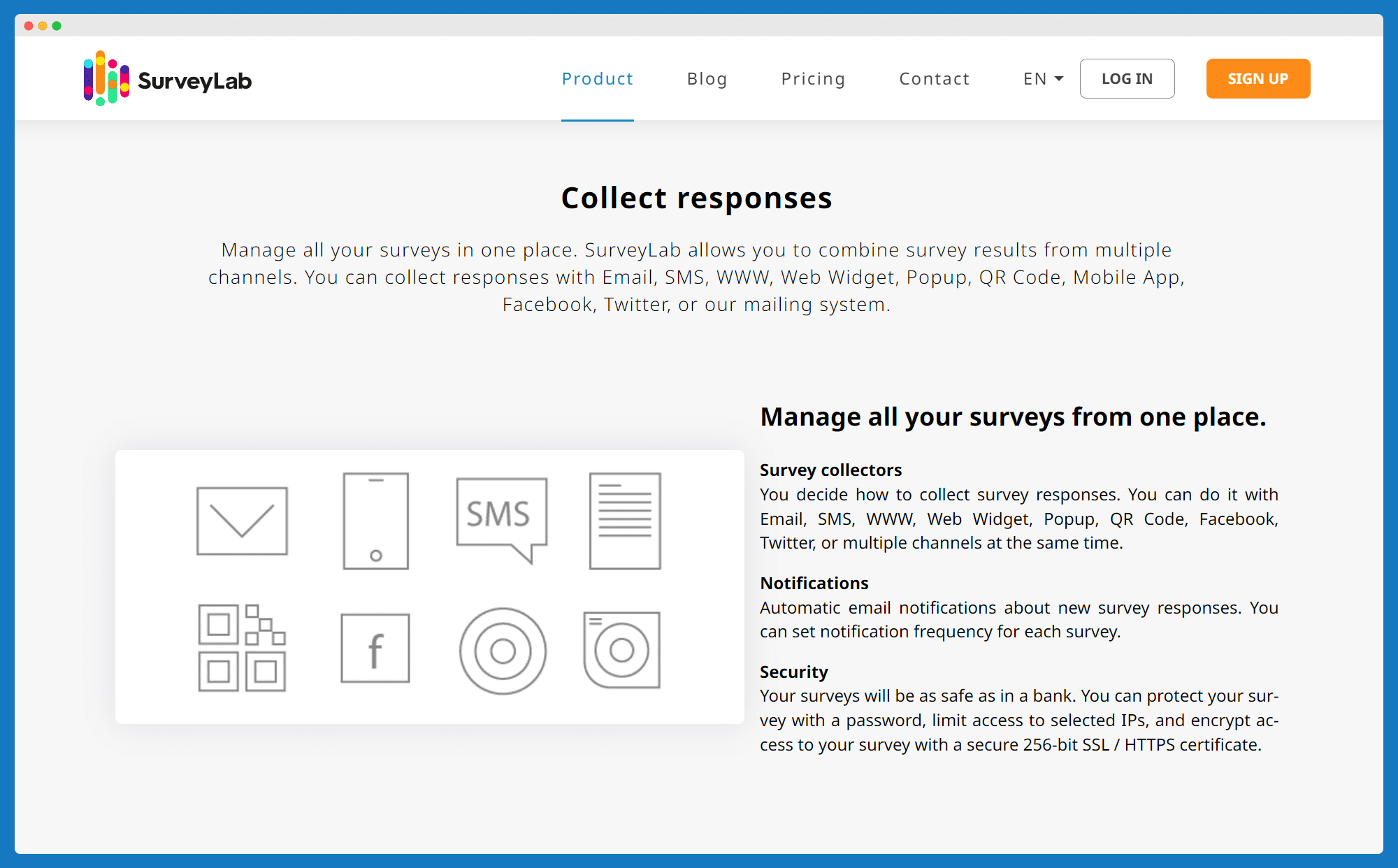Have you ever wondered, “What are leading questions in surveys?” These types of questions can subtly influence the responses you get, shaping the feedback in a particular direction before a respondent even answers.
What are Leading Questions?
A leading question is crafted in a way that suggests a specific answer is preferred, often guiding respondents towards a particular response or assumption, potentially skewing survey results.
When to Use Leading Questions?

Enhancing Customer Feedback Surveys
Leading questions can be strategically employed in customer satisfaction surveys to nudge respondents towards providing feedback on specific areas. For instance, incorporating a prebuilt video conferencing solution together with a reliable conference camera to facilitate these surveys might subtly direct attention to recent changes in customer service quality, aiming to gather insights on that particular aspect while ensuring the feedback is constructive and focused.
Steering Evaluation Surveys for Desired Outcomes
In evaluation surveys, such as those assessing a new product or service, leading questions can help highlight areas of interest or concern to the survey creators. By framing questions in a way that presupposes a positive experience, businesses can encourage respondents to reflect on specific benefits or improvements, guiding the development of future iterations.
Identifying Specific Areas in Customer Experience Surveys
Leading questions in customer experience surveys can serve to pinpoint particular elements of the service or product that the business aims to improve. For example, a question that assumes a high level of satisfaction with the checkout process on a website can elicit feedback that confirms this assumption or brings to light unexpected issues.
Mitigating Bias and Enhancing Objectivity
While leading questions can introduce bias, they can also be used judiciously to counteract existing preconceptions or to balance overly negative or positive feedback trends. By carefully crafting leading question prompts that challenge respondents to consider their experiences from a different angle, survey creators can obtain a more balanced view of customer opinions and experiences.
When NOT to Use Leading Questions?
Sometimes, it’s better to avoid leading questions in a particular way.
Avoiding Bias in Data Collection
Using leading questions that suggest a particular answer can severely compromise the integrity of survey responses, especially when unbiased data collection is crucial. For example, in customer surveys aimed at genuinely understanding client satisfaction, introducing bias through leading questions can result in inaccurate responses that misrepresent customer sentiment. Neutral questions are vital in these scenarios to ensure that collected data accurately reflects the true opinions and experiences of survey respondents, without pushing them in one direction based on the phrasing of the question.
Ensuring Legal and Ethical Compliance
In situations requiring legal precision or ethical considerations, such as surveys conducted by legal lawyers or research institutions, avoiding leading questions is paramount. Direct implication questions or assumption-based leading questions can lead to false information or predetermined responses, skewing the results and potentially leading to poor decision-making or legal challenges. It’s crucial to frame questions in a neutral manner that allows respondents to answer freely, without any influence that could lead to biased or coerced answers.
Gathering Genuine Customer Feedback
When the goal is to collect honest and actionable insights from customer feedback surveys, leading questions can be detrimental. They can force respondents into providing feedback that aligns with what the survey creator desires to hear, rather than their true feelings. For instance, a coercive leading question in a website evaluation survey might push and empower customers to overlook issues they faced, resulting in false feedback that hinders meaningful improvements to the customer service team or business process.
📚 Read: 6 Great Customer Feedback Examples.
Making Informed Business Decisions
For business decisions that depend on accurate and representative feedback, reliance on leading questions can be a critical error. These questions can create survey bias, where the data collected is skewed towards a desired answer, leading to decisions based on flawed assumptions about customer preferences or market needs. Neutral questions that encourage honest and diverse opinions are essential for gathering the insights needed to make informed decisions that will truly benefit the company and its customers in the long run.
👉 See what other poll question types you can ask!
Good Practices for Direct Implication leading questions
Recognizing the Impact of Direct Implication Leading Questions
Direct implication leading questions are powerful tools that, when used responsibly, can subtly guide survey respondents towards deeper reflection. For instance, in website evaluation surveys, asking, “How innovative did you find our website features?” prompts users to consider the site’s uniqueness. This type of question forces respondents to focus on specific attributes, making it useful for gathering targeted feedback without overtly suggesting a desired response.
Balancing Direct Implication with Neutral Framing
To effectively use direct implication questions without biasing responses, balance them with neutral questions within your survey. This approach allows you to explore specific themes or incidents while still capturing unbiased feedback. For example, after a direct question about a website’s ease of use, a follow-up neutral question could ask for open-ended feedback on any site improvements. This ensures that respondents have the opportunity to express their personal opinions freely.
Avoiding Coercive Leading Questions
Coercive leading questions, which push respondents towards a particular answer, should be used cautiously. Instead, frame questions to invite honest feedback without implying that there’s a right or wrong answer. For instance, rather than asking, “Don’t you think our customer service is outstanding?” consider phrasing like, “How would you rate our customer service?” This approach encourages genuine responses, enhancing the value of the data collected.
Crafting Questions with Future Implications in Mind
When creating surveys, consider the future implications of the questions you ask. Direct implication leading questions should be designed not just to gather immediate feedback but to inform future business decisions and improvements. Questions that explore respondents’ future needs or expectations can provide insights into long-term strategies and innovation opportunities.
Utilizing Examples of Leading Questions Wisely
Incorporating examples of leading questions can be instructive for framing your own questions effectively. Analyze these examples to understand how subtly changing the language can impact the neutrality of a question. This can help you avoid unintentionally coercive or loaded questions in your surveys.
Integrating Personal Opinions Through Open-Ended Questions
Even when using direct implication leading questions, it’s crucial to give respondents the space to share their personal opinions. Including open-ended questions alongside direct ones allows for a broader range of responses, offering deeper insights into the respondent’s thoughts and feelings beyond the scope of structured answers.
Ensuring User-Friendly Survey Design
A user-friendly survey design enhances respondents’ willingness to engage honestly with direct implication leading questions. Ensure that the survey layout is intuitive and that questions are presented in a logical order that flows naturally from general to more specific topics. Additionally, incorporating QR codes for easy access to the survey on mobile devices can facilitate a smoother response process, reducing frustration and potential bias.
Reflecting on Preconceived Notions
Survey creators must reflect on their own preconceived notions when crafting direct implication leading questions. By remaining aware of any biases, you can design questions that truly aim to explore rather than confirm your existing beliefs. This self-awareness is crucial for creating surveys that yield actionable and reliable insights.
Emphasizing Clarity and Avoiding Emotionally Charged Language
To ensure that direct implication leading questions are effective and not misleading, emphasize clarity and avoid using emotionally charged language. Questions should be straightforward, avoiding complex or interconnected statements that might confuse respondents or lead them towards a specific answer. This clarity helps maintain the integrity of the survey and the accuracy of the responses collected.
Use a Reliable Survey Software!
No matter what type of question you use in your survey, you need to have a solid tool. With SurveyLab, you gather responses, and you can analyze the results on the spot.
Also, sharing your survey is super quick and smooth.
Moreover, SurveyLab:
- Is ready to use immediately with no software installation required
- Supports surveys on any device including PC, tablet, and smartphone
- Allows customization of survey appearance and behavior
- Offers multiple channels for collecting responses such as Email, SMS, and social media
- Provides real-time, automatic report generation
- Enables team collaboration on surveys and results
- Integrates with external systems via API for automated workflows
- Access to a global research panel with over 250 million panelists
- High-level security measures including GDPR compliance
- Extensive support options including web, email, and dedicated phone support

Sign in to SurveyLab today!
Examples of Leading Question and Direct Implication Questions
Below, you will find a few types of leading questions that you can leverage. These few closely connected statements as leading questions examples can help you with your strategy. Get familiar with a few examples below.
“Don’t you agree our new product greatly improves efficiency?”
This leading question assumes agreement with a positive statement about a product, steering respondents towards a particular answer. It’s a direct implication leading question because it suggests that the product’s efficiency is a given, potentially skewing feedback towards the desired outcome. Survey creators should strive for neutrality to gather honest assessments rather than confirmation of preconceived notions.
“Were you satisfied with the exceptional service today?”
By using the word “exceptional,” this question leads respondents to answer in a certain way, implying that the service should be viewed as outstanding. It’s an example of how leading questions can introduce bias, influencing respondents to reflect on their experience more positively than they might have otherwise. Neutral phrasing would more accurately gauge genuine customer satisfaction.
“How would you rate our fast and reliable customer support?”
This direct implication leading question embeds the assumption that the customer support is both fast and reliable, which could coerce the respondent into agreeing with this characterization. Such questions limit the scope for personal opinions, potentially resulting in inaccurate responses that reflect the survey’s suggestions rather than the respondent’s true experiences.
“Isn’t it better to use our software than to struggle with manual processes?”
This leading question contrasts the ease of using the software with the difficulty of manual processes, pushing respondents towards acknowledging the software’s superiority without considering its actual performance. It’s a coercive type of question that can lead to false feedback, important for survey creators to avoid if seeking actionable insights for business decisions.
“Do you think our team responded poorly to your request?”
Even though this question might seem to invite criticism, its phrasing—”responded poorly”—leads respondents to focus on negatives, potentially overlooking any positive aspects of the interaction. It’s an example of a loaded question that directs respondents to think in a certain way, emphasizing the importance of using neutral questions for a balanced evaluation.
“How satisfied are you with the easy navigation of our website?”
This direct implication question assumes that the website navigation is easy, which might not be every user’s experience. It’s a subtle way of leading respondents to overlook navigation issues, demonstrating how assumption-based leading questions can skew survey responses and hinder the collection of genuine feedback.
“Would you recommend our efficient and affordable services to others?”
Embedding the qualities “efficient and affordable” within the question pushes respondents towards a positive evaluation before they’ve even considered their answer. This type of leading question can generate biased responses that are more about agreeing with the survey’s assumptions than offering an honest opinion.
“Do you appreciate the quick resolution of your issue, unlike with other services?”
Comparing the resolution time to “other services” within the question frames the company in a positive light by default, leading respondents to view the service more favorably due to the direct implications made. Such comparative leading questions can subtly influence perceptions, underscoring the need to avoid loaded or coercive questions for unbiased feedback collection.
Conclusion
Crafting survey questions that avoid leading the respondent towards a particular incident or answer is crucial for gathering unbiased, actionable insights. Answer-based questioning, which may imply what should eventually happen, can skew the data to a certain degree, limiting the authenticity of the feedback received. It’s essential for survey questions to allow respondents to answer freely, ensuring their responses reflect genuine opinions rather than what the respondent agrees or thinks the surveyor wants to hear. Achieving this balance ensures that the conclusions drawn from surveys are accurate and truly beneficial for making informed decisions.
Sign in to SurveyLab for better data collection!
FAQ on leading questions
Check them out!
Leading questions suggest a specific answer. They guide the respondent towards a certain response, which can change the survey results.
Use leading questions in surveys when you want to focus feedback on certain areas or guide the development of new products by highlighting specific benefits.
Avoid leading questions when you need unbiased data. They can make survey results inaccurate because they might force people to give answers that the survey maker expects.
“Don’t you agree our new product greatly improves efficiency?” This question assumes the product is efficient and guides the respondent to agree.
Mix leading questions with neutral ones. This lets you explore specific themes while also getting honest feedback on other topics.

Leave a Message
You must be logged in to post a comment.